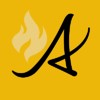
PEACE RIVER FOREST AREA / WILDFIRE SITUATION
There are currently six fires classified as UNDER CONTROL and two fires classified as BEING HELD in the Peace River Forest Area. Since January 1, there have been 101 wildfires in the Peace River Forest Area, which have burned approximately 15,901 hectares.


Fire danger is high to extreme in the agricultural zone and high around Fort McMurray, High Level, and Grande Prairie. Fire danger is low to moderate across most the rest of the boreal and the northern Rockies. Fire danger is high elsewhere.
Since January 1, there have been 1136 wildfires recorded in the Forest Protection Area that have burned 707,039 ha. Last year, on this date, there were 998 wildfires that had burned 2,204,523 ha across the province.
CLASSIFICATIONS | Learn more about wildfire classifications.
LOCATIONS | View this wildfire on our interactive map by following the active wildfire link.

FALL FEATURE: Fire Risk During the Harvest Season
Equipment and Fire

As we transition into the harvest season here in Peace Country, the combine harvester becomes a familiar sight. These behemoth machines are built to separate seeds from dry crop plants and discard the remaining material.
It is well known among farmers and rural residents that the combine is the machine on the farm most at-risk of fire. The reason for this is not the machine itself, but rather the tinder-dry material that the combine works with and the heat caused by long hours of continuous operation.
Mitigating fire risk on the combine and other harvesting equipment can be divided into three categories:
✅Prevention:
- Clearing out any excess chaff around the engine, radiator, exhaust, bearings, augers, belts, and chains
- Cleaning any excess oil, fuel, grease, and other leaks
- Replacing any damaged electrical wiring, exhaust systems, and drive belts
- Shutting off before fueling
- Lubricating moving components according to manufacturer recommendation
- Storing machinery away from external heat sources
- Ceasing operations during excessive heat
✅Monitoring:
- Performing a walk-around inspection after morning start up and evening shut off
- Routinely checking temperature gauges and sensors
✅Suppression:
- Having up to date ABC Dry Chemical fire extinguishers: a 10 pound extinguisher in the cab and 20 pound extinguisher at ground level. Know where they are and how to use them.
- In the event of a fire:
-Shut off the engine
-Exit the machine
-Call 911
-If using a fire extinguisher aim for the base of the fire
Tractors, combines, swathers, balers, and other heavy machinery on the farm can all cause wildfires. Prevention is the best tool to protect people, homes, landscapes, and livelihoods.
Hay Bales and Fire

It would surprise those not familiar with farming practices to learn that wet hay bales are more of a fire risk than dry hay bales. When baled at too high of a moisture level, hay bales are at risk of spontaneous combustion. This occurs when the hay metabolizes or "burns" the sugars in the plant, heating the tightly packed core. Once the internal temperature of the hay bale reaches 80°C, the heat, fuel, and pressure cause the bale to combust and burn. When sitting out in a dry field, burning bales can be an ignition source to wildfires.
We can reduce the risk of bale combustion wildfire by:
✅Prevention:
- Ensuring crop moisture content levels are low when baling
- Storing bales in a dry, inflammable location
✅Monitoring:
- Performing routine temperature checks on bales via probe
- Routinely checking for a musty-sweet fermenting smell from the bales
✅Suppression:
- In the event a bale begins to rise in temperature:
-Pull the bale apart and wet the hay
-Spread the hay away from other feed and buildings - In the event of a bale fire:
-Keep your distance
-Call 911
To learn more about reducing the risk of wildfire on the farm, download the FireSmart Farm and Acreage Guide.

From all of us here at Peace River Forestry, we wish farmers and their families a safe and bountiful harvest season.
CONTACT:

Join the conversation on Facebook, Twitter or Instagram.
HELPFUL LINKS
